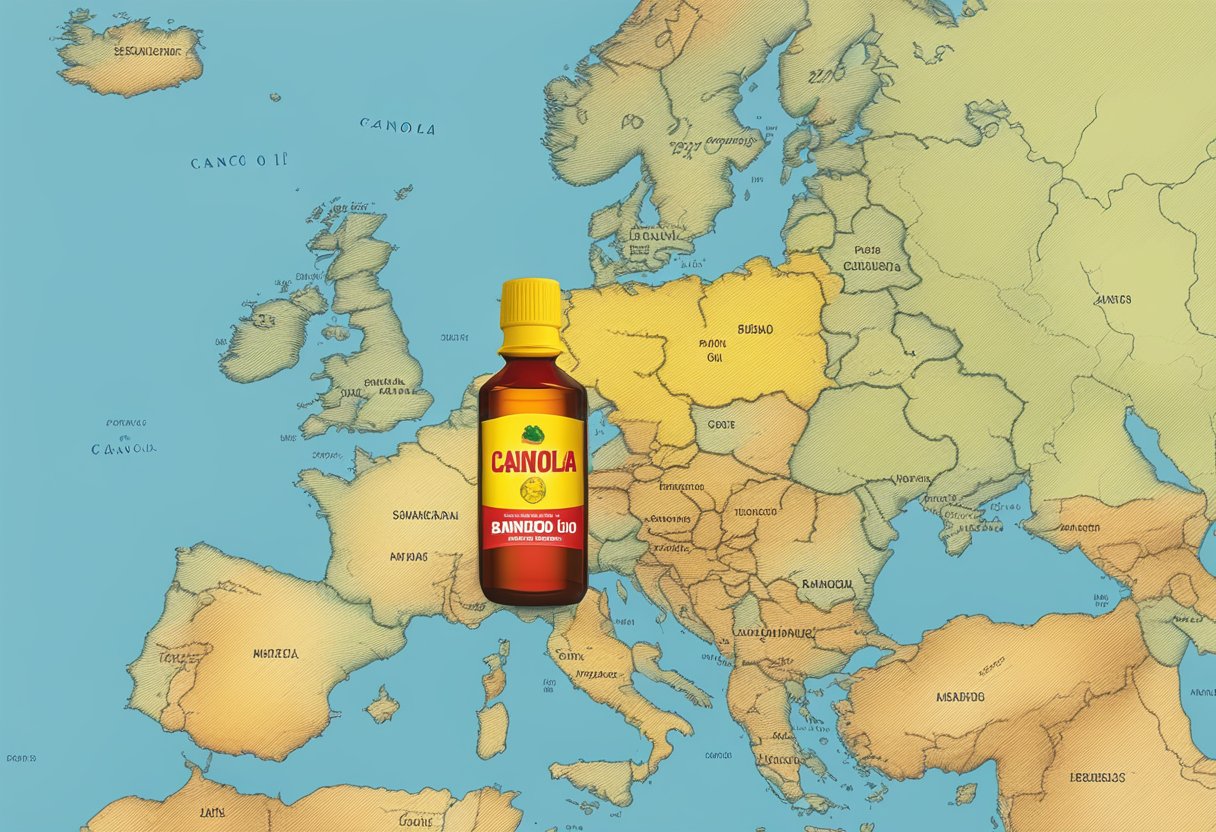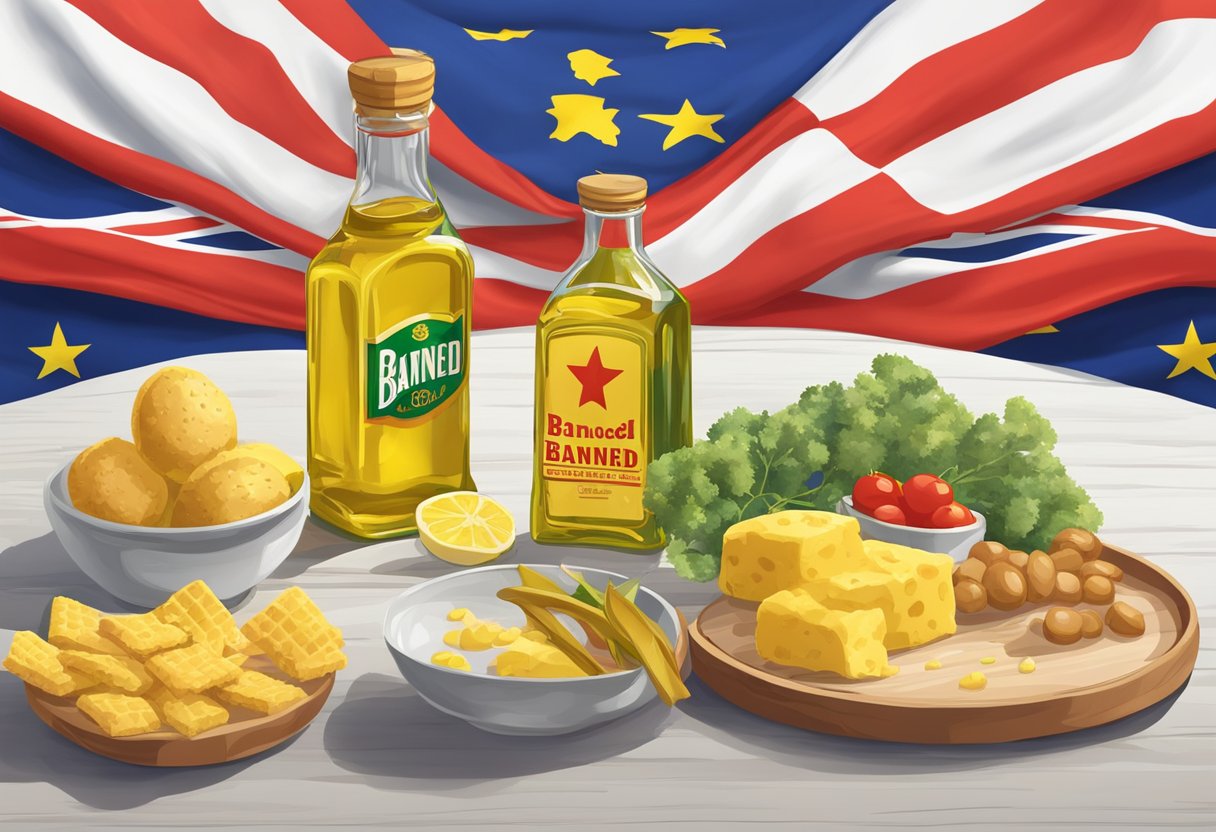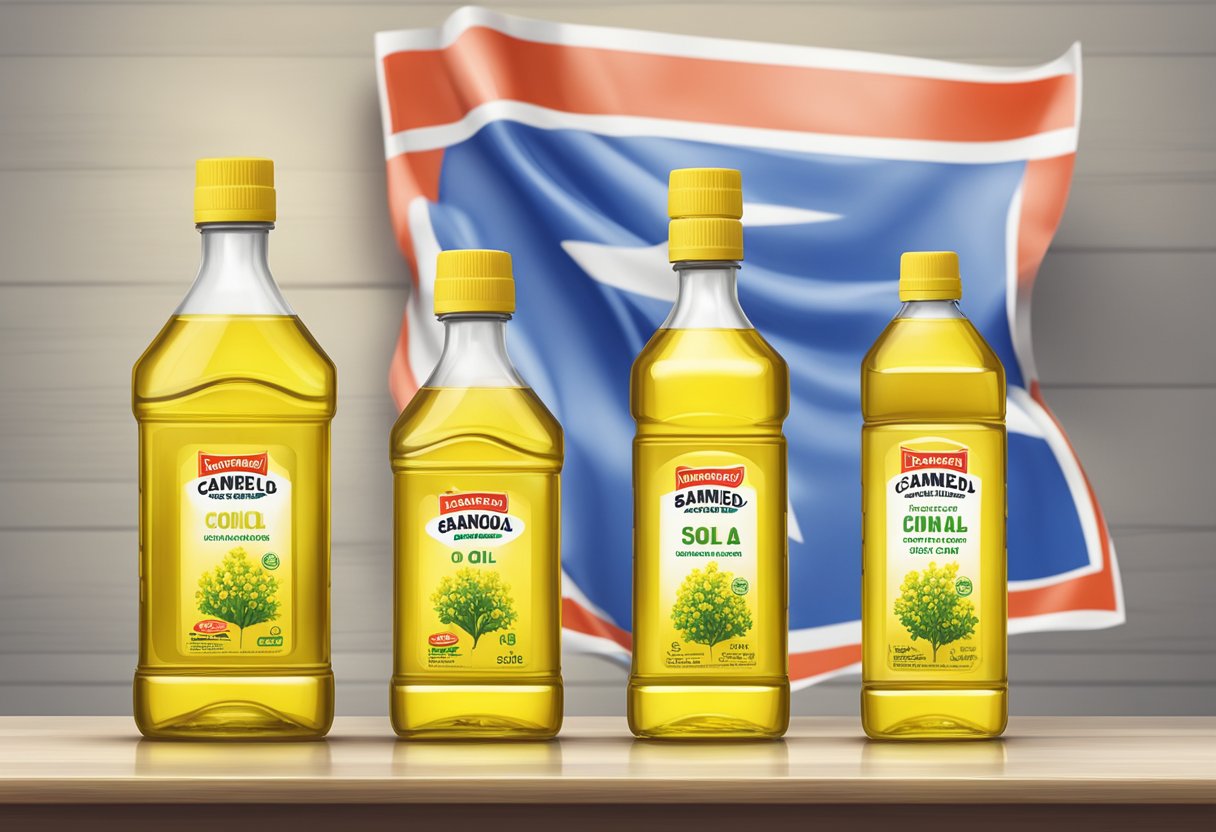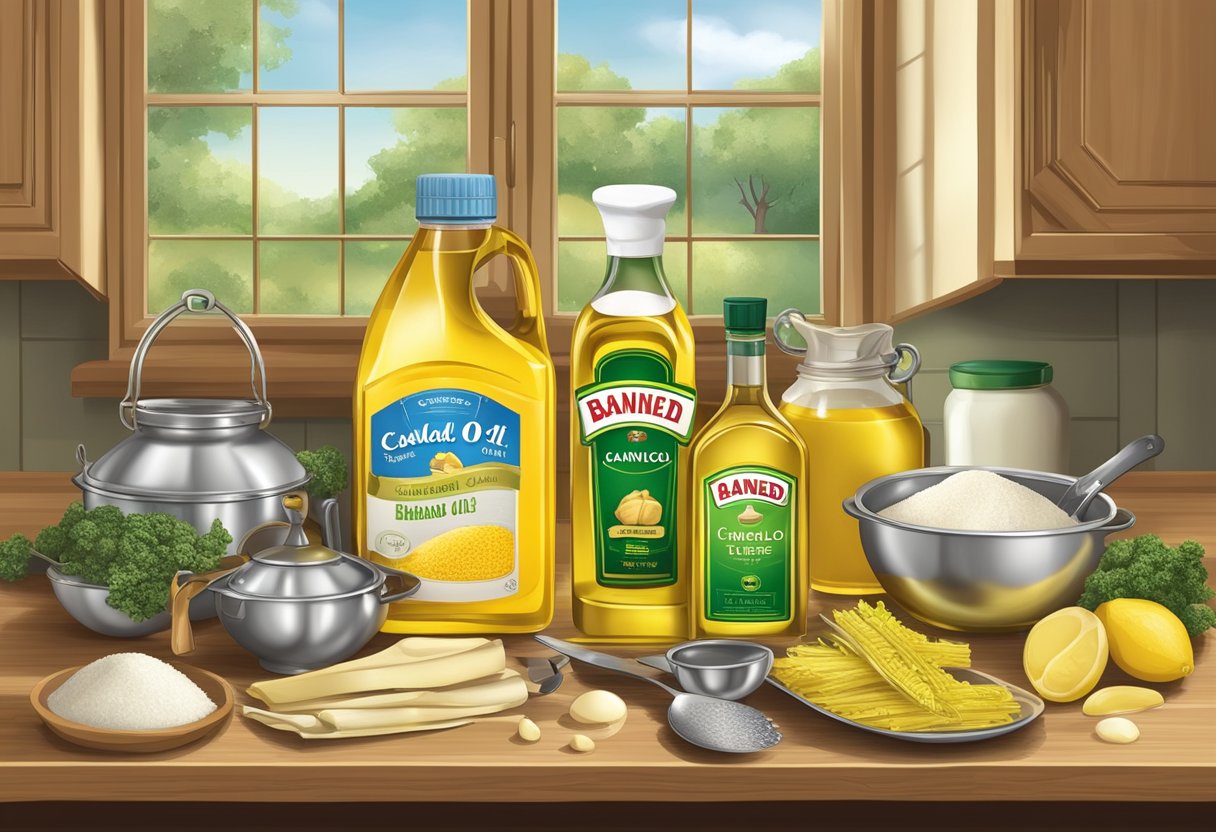In recent years, canola oil has been at the center of numerous debates concerning its health implications and legal status in various parts of the world. Specifically, there has been considerable discussion and confusion regarding its legal status in Europe. Canola oil, which is extracted from the seeds of the canola plant—a genetically modified version of the rapeseed—has been under scrutiny due to concerns about its nutritional content and safety. Let’s talk about why is Canola oil banned in Europe.

Contrary to some circulating claims, canola oil is not banned in Europe. The misunderstanding seems to have arisen from concerns associated with rapeseed oil, which is high in erucic acid, a fatty acid that could potentially be harmful in large amounts. While strict regulations exist concerning the erucic acid content in oils consumed in the EU, canola oil has been bred to contain low levels of this acid making it safe for consumption and thus, legally available on the European market.
Health authorities have assessed canola oil and consider it to be safe for use within the established guidelines. This has allowed canola oil to be a common fixture within European kitchens for its versatility and the fact that it contains lower saturated fats compared to other cooking oils. The persistent rumors of a ban likely stem from misunderstanding or misrepresentation of EU regulations, but it is clear that when it comes to canola oil in Europe, the oil is subjected to stringent health safety standards rather than a prohibition.
Contents
Historical Context and Origin
The transition from rapeseed to canola oil is a significant chapter in agricultural history, shaped by both scientific innovation and policy changes. This section outlines the transformation of the rapeseed plant into the canola variety and the subsequent shift in European agricultural policies that have impacted its cultivation and use.
The Evolution of Rapeseed to Canola
Rapeseed oil, derived from the seeds of the rapeseed plant, a member of the mustard family, traditionally contained high levels of erucic acid. Recognizing the potential health risks associated with erucic acid, scientists in Canada began to develop a variety with significantly lower erucic acid content. In the 1970s, through conventional breeding techniques, canola was born—a term that stands for “Canadian oil, low acid.” This new variety of rapeseed oil boasted not only reduced erucic acid levels but also lower amounts of glucosinolates, making it more suitable for human consumption and animal feed. Canola oil thus became a separate classification distinct from traditional rapeseed oil, with both conventional and genetically modified variants.
Shift in European Agricultural Policy
The European Union has traditionally maintained strict regulations on genetically modified (GM) crops. Amid various concerns, including environmental and health considerations, the cultivation of GM crops has faced significant restriction within the EU. Although traditional rapeseed is still grown and used in Europe, the strict regulations have impacted the adoption and perception of canola oil, particularly GM canola. These policy decisions reflect a cautious approach to new agricultural technologies and a preference for traditional cultivation practices. It’s important to note that canola oil itself is not explicitly banned across Europe – policies and regulations may vary by country and typically pertain to genetically modified crops and specific standards for edible oils.
Nutritional Profile and Consumption

Canola oil’s nutritional value and consumption practices are often compared to other oils, with attention given to its content of different types of fats.
Comparative Analysis with Other Oils
Canola oil is known for its low saturated fat content compared to many other cooking oils. It contains higher levels of monounsaturated fats, which are considered a healthier choice for heart health. A direct comparison with olive oil, which is praised for its nutritional benefits, shows that canola oil has a similar monounsaturated fat profile. However, olive oil contains more polyphenols, compounds that may contribute additional health benefits.
Table of Fat Composition in Different Oils (per 100g):
| Oil Type | Saturated Fat | Monounsaturated Fat | Polyunsaturated Fat |
|---|---|---|---|
| Canola Oil | 7g | 63g | 28g |
| Olive Oil | 14g | 73g | 11g |
| Avocado Oil | 12g | 71g | 13g |
Examining Fats: Saturated vs. Unsaturated
Health guidelines often stress the importance of reducing saturated fat intake, as they can contribute to higher cholesterol levels and increased risk of heart disease. Monounsaturated and polyunsaturated fats, found abundantly in canola oil, are considered healthier alternatives. They contribute positively to heart health by improving blood cholesterol levels. Canola oil also contains both omega 3 fatty acid and omega 6 fatty acids, essential fats that the body cannot produce on its own. The oil’s balanced ratio of omega-6 to omega-3 fatty acids, typically between 2:1 and 3:1, is beneficial for nutrition and is considered safe for consumption.
Health Concerns and Safety Standards

The regulatory landscape and safety concerns surrounding canola oil in the European Union stem from its erucic acid content and potential toxicity. These issues influence standards and health guidelines relevant to consumption. Hopefully, that answers your why is canola oil banned in Europe question.
Regulatory Status in the European Union
The European Union has not issued a blanket ban on canola oil; instead, it enforces strict standards to regulate erucic acid levels in food products. EU Regulation 2016/1842 specifies maximum limits for erucic acid in vegetable oils and foodstuffs, mainly to protect consumer health. Canola oil derived from rapeseed is available in Europe but must adhere to these regulatory requirements.
Toxicity and Health Effects
Concerns about the potential toxicity of canola oil relate to its erucic acid content. High levels of erucic acid have been associated with health risks, including heart disease. The European Food Safety Authority (EFSA) has evaluated these risks, leading to recommendations and safe intake levels to mitigate adverse health effects, especially on heart health.
Erucic Acid: Myths and Facts
- Myth: All canola oil contains harmful levels of erucic acid
- Fact: Most canola oil in international markets has been bred to contain low levels of erucic acid
Erucic acid content in rapeseed oil underwent significant scrutiny due to links with health problems when consumed in large amounts. Modern canola oil, however, typically possesses much lower erucic acid levels in line with international regulations, including those set by the Food and Drug Administration (FDA) in the United States, which allow for a maximum of 2% erucic acid by weight in canola oil.
Production and Processing Analysis
In the journey from plant to pantry, canola oil undergoes a complex production and processing regimen that begs scrutiny. This route involves transforming canola seeds into oil, leveraging both genetic modification for crop resilience and sophisticated industrial processes to ensure the final product is suitable for consumption.
From Seed to Oil: The Manufacturing Process
Canola oil is produced from the seeds of the canola plant, a cultivar of rapeseed. The manufacturing process begins with the seeds being cleaned and crushed to break them down. This crushing step yields two products: oil and a solid material called “meal”. The oil from this initial extraction contains impurities and thus requires refining. The crude oil is then subjected to a process using a solvent, commonly hexane, which helps to extract the maximum amount of oil from the seeds. This solvent extraction leaves behind oil that is still not ready for consumption.
The extracted oil must undergo further processing, involving several stages:
- Degumming: Removal of phospholipids and other impurities
- Neutralization: Elimination of free fatty acids to reduce acidity
- Bleaching: Removing color pigments and other minor impurities
- Deodorization: Use of steam to strip unpleasant odors and flavors
Genetic Modification and Canola Cultivation
Canola crops have been genetically modified to improve their oil’s quality and the plants’ resistance to herbicides. These modifications were aimed at reducing the levels of erucic acid, normally found in rapeseed oil, which raised health concerns due to its toxicity in high amounts. The term “genetically modified organism” or GMO refers to any organism whose genetic material has been altered via genetic engineering. GM crops are widespread in canola cultivation due to their higher yield and resilience against pests and diseases.
The production of GM canola involves specific genetic alterations for:
- Lower erucic acid content
- Resistance to certain herbicides, allowing farmers to control weeds without harming the canola plants
However, the use of GMOs and the intensive processing required for canola oil, which is considered a highly processed vegetable oil, introduces a level of controversy concerning its health implications and environmental impact. Canola oil’s ubiquity in the food industry is due in part to its favorable properties such as a neutral taste, but these come at the cost of the extensive extractions and industrial processes detailed above.
Culinary Uses and Cooking Recommendations

As a versatile cooking oil, canola oil is often chosen for its neutral flavor and high smoke point, making it a suitable option for a variety of cooking applications.
Ideal Uses of Canola Oil in Cooking
Frying: Canola oil’s high smoke point, which is approximately 400°F (204°C), makes it an excellent choice for frying. Foods can be cooked at high temperatures without the oil breaking down and releasing harmful compounds.
Salad Dressings: The oil’s neutral taste contributes to its widespread use in salad dressings, where it allows the flavors of other ingredients, such as herbs and spices, to shine through.
Baking: Canola oil can be used in baking as a substitute for butter or other fats, potentially reducing the overall content of saturated fats and trans fats that contribute to heart disease.
Sautéing: Its ability to endure medium-high heat makes it a preferred option for sautéing vegetables and meats, retaining the food’s natural flavors.
Comparison of Cooking Properties
| Property | Canola Oil | Olive Oil | Sunflower Oil |
|---|---|---|---|
| Smoke Point | High | Medium to High | Medium to High |
| Flavor | Neutral | Distinct | Mild |
| Best Used For | Frying, Baking | Dressings, Sautéing | Frying, Sautéing |
Olive oil, often celebrated for its health benefits, has a lower smoke point compared to canola oil, making it less suitable for high-heat cooking like deep frying, but ideal for dressings and low- to medium-heat applications.
Sunflower oil, similar to canola oil, has a relatively high smoke point and mild flavor, though it may contain higher levels of saturated fats, affecting cholesterol levels for certain individuals.
In the landscape of cooking oils, canola oil’s balance between health considerations and cooking performance has positioned it as a competitive and commonly used oil in kitchens worldwide, alongside other vegetable oils.
